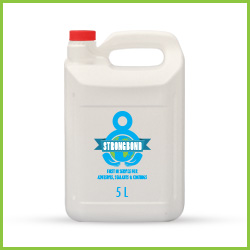Contact adhesives are truly versatile adhesives. They will adhere to an extremely wide assortment of surfaces, including all kinds of metal, wood, and many kinds of acrylic plastic materials. Some people call them glue guns. The difference between glue guns and contact adhesives is that glue guns are used to glue down large pieces of furniture and other items whereas contact adhesives are used to adhere small, thin sheets of material together. If you need to glue or tack something together where it will be permanent, you should use a contact adhesive. However, if you want the item to have a little bit of give so that it can be reshaped or molded, then you should use a liquid nail.
There are two types of contact adhesives available – those that are oil-based and water-based. The difference between these two is not really that significant. It is more to do with the properties of the substance itself. Typically, an oil-based adhesive will be stronger and more malleable than a water-based one. https://bestreviewstips.co.uk/contact-adhesives_9289/ The type of bond that you are trying to achieve will generally dictate which type of adhesive you are going to need to purchase.
There are basically three types of contact adhesives; mechanical, structural, and thermal. Mechanical adhesives include glue, tape, caulk, and grout. Structural adhesives include such things as mastic, concrete impasto, and clevages. Thermal bonding agents include such things as epoxy and glue based thermoset polyimide.
With contact adhesives, you are usually looking to create a physical bond between two or more surfaces. There are many different types of these types including static adhesive, which is used to attach something flat to another surface, to a solid piece of material, or to a thin film of plastic. There are also many different types of thermoset adhesives including thermoset polyimide, which is usually a clear, semi-translucent substance that has numerous different chemical and polymer bonds covalent to it. There are also a few types of UV curing adhesives such as YAG,elight, and Ultraviolet curing ink. All of these have different purposes and will bond different types of materials.
One of the most common types of contact adhesives is thermoset polyimide. This is an extremely strong adhesive because of the molecular size and molecular bonding properties. In addition, it provides extremely good adhesion to a wide range of substrates including rubber and plastics. While this provides a very strong, immediate bond strength, it can sometimes weaken over time because it is composed of many smaller molecules.
The most popular type of contact adhesives in use today are thermoform bond glue and epoxy glue. Thermoform glue consists of a curing agent injected into a mold which is then allowed to cure. Then, the mold is formed and hot metal is pushed into it to cure the glue. The most common use of this type of adhesive is in the production of pressure sensitive adhesive tapes. This is because these tapes require a very strong bond in order to be properly functional and last for long periods of time.
Epoxy glue is the most commonly used form of contact adhesive for bonding purposes. It consists of a liquid suspension of phenol carbide, chlorination, and other chemicals. A hard resin, it bonds extremely quickly with virtually any substance. However, epoxy glue dries out over time, which means it may not be appropriate for bonding plastic parts if they have a significant thickness. Another disadvantage to using epoxy glue is that it tends to peel off, especially if it comes into contact with water.
All three types of contact adhesives can be mixed together to form a homogenous, sticky and pliable glue. When these three types are combined they create a product that has the properties necessary to bond two surfaces together. However, before the glue is placed on the surface, careful preparation is required. Gluing two surfaces together without the right quantity of glue on each side or without the correct type of adhesive is almost guaranteed to fail. Therefore, before beginning the process of laminating, make sure you are prepared properly to do it right.
Hello world!
Welcome to your brand new blog at Edublogs!
To get started, simply visit your blog’s dashboard, edit or delete this post and check out all the other options available to you.
Like more help?
We can walk you through step-by-step in our guide to getting started with your blog.
Happy blogging!